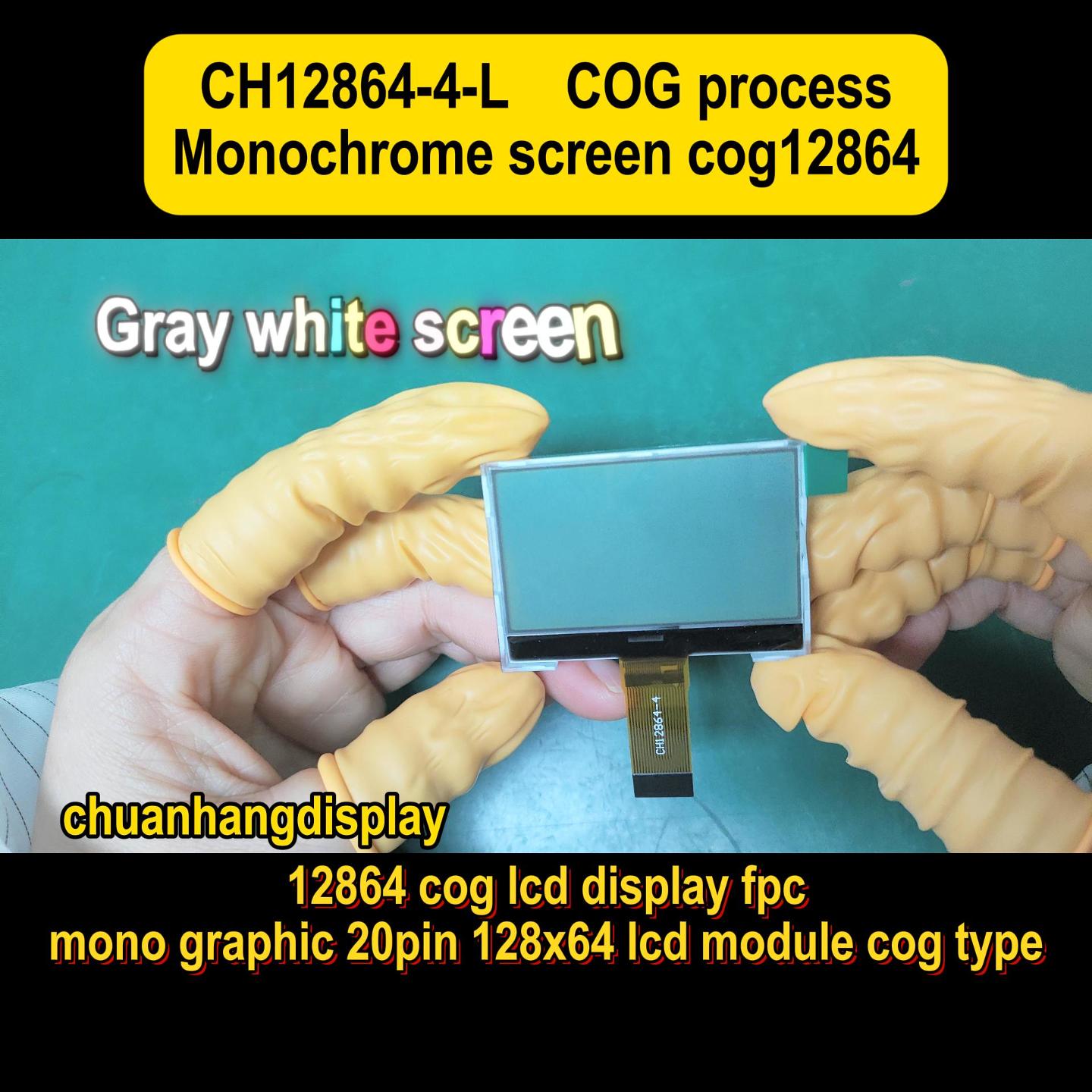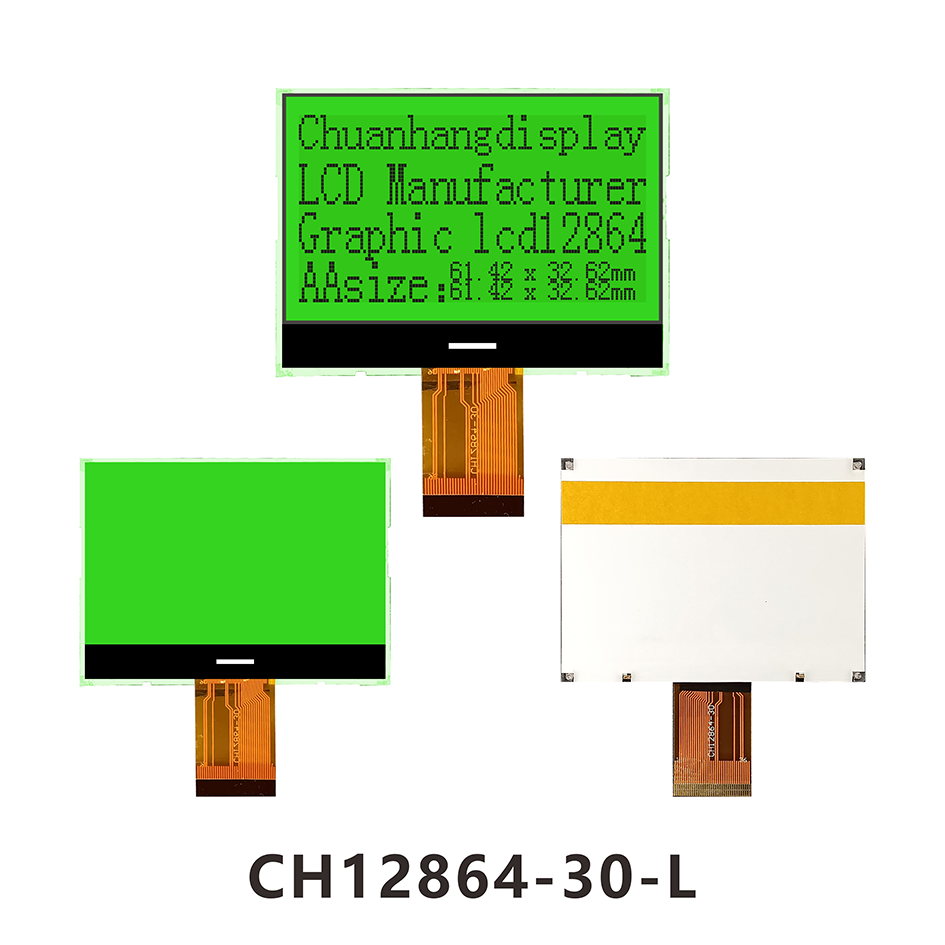When it comes to embedded systems and electronic projects, the 12864 LCD display is a familiar name among engineers and hobbyists. This dot matrix display, with its 128x64 pixel resolution, has become a staple in devices requiring a clear, readable interface. Whether you're building a DIY weather station, a portable medical device, or an industrial controller, the 12864 LCD display offers a balance of simplicity and functionality. In this article, we’ll explore the technology behind these displays, their applications, and common challenges users face. We’ll also highlight the role of brands like Chuanhang Display in providing reliable solutions.

A 12864 LCD display is a type of graphical liquid crystal display capable of rendering text, symbols, and basic graphics. The name "12864" refers to its resolution: 128 pixels horizontally and 64 pixels vertically. These displays are often monochrome, with blue or yellow backlighting, and they communicate via parallel or serial interfaces. One common variant is the CH12864, a model series produced by manufacturers such as Chuanhang Display, known for its durability and ease of integration.
The 12864 LCD display typically includes a controller, such as the KS0108 or ST7920, which simplifies communication with microcontrollers like Arduino or STM32. This makes it accessible even for beginners in electronics. Its versatility allows it to be used in everything from consumer electronics to specialized industrial equipment.
At its core, the 12864 LCD display operates by controlling individual pixels through a grid of electrodes. The display is divided into two halves, each managed by a separate controller chip. This segmentation allows for efficient data handling. When connected to a microcontroller, data is sent to the display’s internal memory (DDRAM), which maps directly to the pixels on the screen.
The CH12864 models, for instance, often use a serial peripheral interface (SPI) or I2C, reducing the number of pins required for connection. This is particularly useful in projects with limited GPIO pins. The display’s contrast can be adjusted via a potentiometer, ensuring optimal readability under different lighting conditions.
The 12864 LCD display is ubiquitous in applications where a compact, low-power screen is needed. In the medical field, it’s used in devices like blood glucose monitors and portable ECG machines. Industrial machines utilize these displays for control panels and diagnostic readouts. Additionally, consumer products such as home appliances, calculators, and even retro gaming devices often feature a 12864 LCD display.
Brands like Chuanhang Display have expanded the use cases by offering versions with wide temperature ranges and high durability, suitable for harsh environments. The CH12864 series, for example, is known for its stability in both high and low temperatures, making it ideal for automotive and outdoor applications.
One of the key benefits of the 12864 LCD display is its low power consumption, which is critical for battery-operated devices. Unlike OLED displays, LCDs do not suffer from burn-in issues, ensuring longevity. The simplicity of control and widespread library support for microcontrollers also makes it a favorite among developers.
The CH12864 models from Chuanhang Display often come with enhanced viewing angles and brighter backlights, addressing common limitations of standard displays. Their cost-effectiveness compared to higher-resolution screens is another reason for their popularity in mass-produced products.
Despite their reliability, users of 12864 LCD displays may encounter several common problems. Understanding these issues can save time and frustration during development.
If the 12864 LCD display fails to power up, check the wiring connections first. Incorrect voltage supply is a frequent culprit. Ensure the display is receiving the correct voltage (typically 5V or 3.3V). Also, verify that the backlight is properly connected, as some models have separate pins for backlight power.
Flickering often occurs due to unstable power supply or improper contrast settings. Adjust the contrast potentiometer, and ensure the power source is stable. Adding a capacitor between VCC and GND can smooth out voltage fluctuations. Ghosting, where faint images persist, might indicate a need for resetting the display or checking the communication timing.
For CH12864 displays using SPI or I2C, communication errors can arise from incorrect clock settings or loose connections. Double-check the code for the correct initialization sequence and clock speed. Ensure that the chip select (CS) pin is properly managed in the code.
Dead pixels or lines missing on the screen are sometimes hardware-related. If under warranty, contact the supplier like Chuanhang Display for a replacement. For older displays, gently pressing on the flex cable might temporarily fix connection issues, but this is not a long-term solution.
Incompatibility with Libraries
When using Arduino or other platforms, library incompatibility can cause display malfunctions. Ensure you’re using a library compatible with your display’s controller chip. For CH12864, refer to the datasheet for specific commands.

Selecting a 12864 LCD display depends on factors like interface type, operating temperature, and additional features. For projects requiring simplicity, models with SPI/I2C interfaces are preferable. If you need robustness, consider Chuanhang Display’s CH12864 series, which offers extended temperature ranges and anti-static protection.
Cost is another consideration; basic models are affordable, but investing in a quality display from a reputable brand can prevent future issues. Always review the datasheet to ensure compatibility with your microcontroller.
Chuanhang Display has established itself as a trusted manufacturer of LCD modules, including the CH12864. Their displays are known for consistent quality and reliability, backed by strong customer support. By focusing on innovation, they’ve introduced features like sunlight-readable options and touchscreen integrations, expanding the capabilities of the standard 12864 LCD display.
While higher-resolution displays are becoming common, the 12864 LCD display remains relevant due to its cost-effectiveness and simplicity. Advances in technology may lead to improved contrast ratios and lower power consumption. Brands like Chuanhang Display are likely to continue refining these displays for emerging applications in IoT and wearable technology.
The 12864 LCD display is a versatile and reliable component that continues to play a vital role in electronics. Whether you’re using a generic model or a CH12864 from Chuanhang Display, understanding its operation and common issues can enhance your project’s success. With its balance of performance and affordability, this display is sure to remain a popular choice for years to come.
By addressing typical problems and choosing the right display for your needs, you can leverage the full potential of the 12864 LCD display in your innovations.